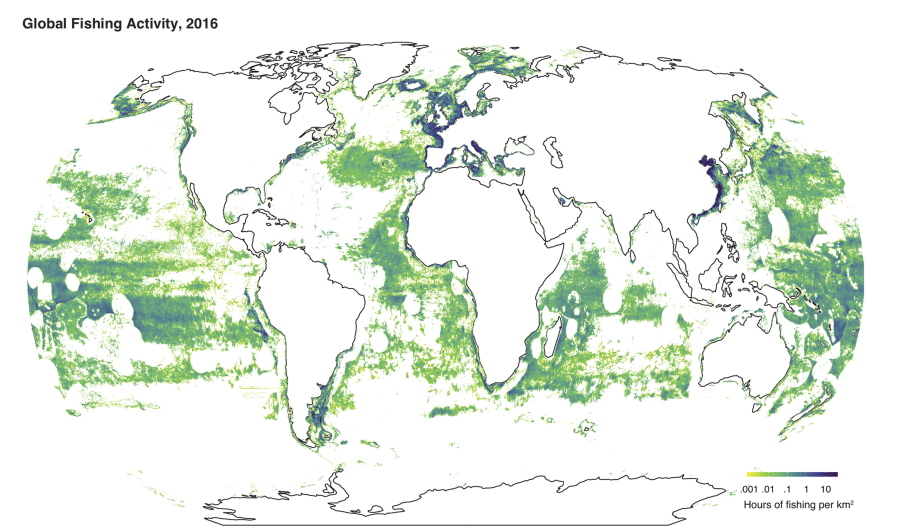WASHINGTON — Scientists tag sharks to see where they roam in the high seas, but until now they couldn’t track the seas’ biggest eater: Humans.
By using ships’ own emergency beacons, researchers got the first comprehensive snapshot of industrial fishing’s impacts around the globe. And it’s huge — bigger than scientists thought, according to a new study.
Large-scale commercial fishing covers more than 55 percent of the oceans with the world’s fishing fleet traveling more than 285 million miles a year — three times the distance between Earth and the sun, according to research in Thursday’s journal Science .
Five countries — China, Spain, Taiwan, Japan and South Korea — were responsible for 85 percent of high seas fishing.
“The most mind-blowing thing is just how global an enterprise this is,” said study co-author Boris Worm, a marine biologist at Dalhousie University in Canada. “It’s more like factories that are mass producing product for a global market and less like hunters that are stalking individual prey.”
The fishing patterns were gleaned from 22 billion automated ship safety signals beamed to satellites. Before this, scientists had to rely on a sampling of ships’ logs and observations, which were spotty.
Ships are obeying no-fishing zones and times, although they hover at the edges of marine-protected areas. Fishing tends to drop on holidays including Christmas, New Year’s and the Lunar New Year, researchers found.
China dominates global fishing. Of the 40 million hours that large ships fished in 2016, 17 million hours were by boats under a Chinese flag, according to another study co-author, Stanford marine biologist Barbara Block.
The research shows a heavy use of long-line fishing in the high seas, which tends to catch top predators like tuna, sharks and whales.
Editor’s note: In this story, The Associated Press erroneously included whales among the species caught with long-line fishing.



